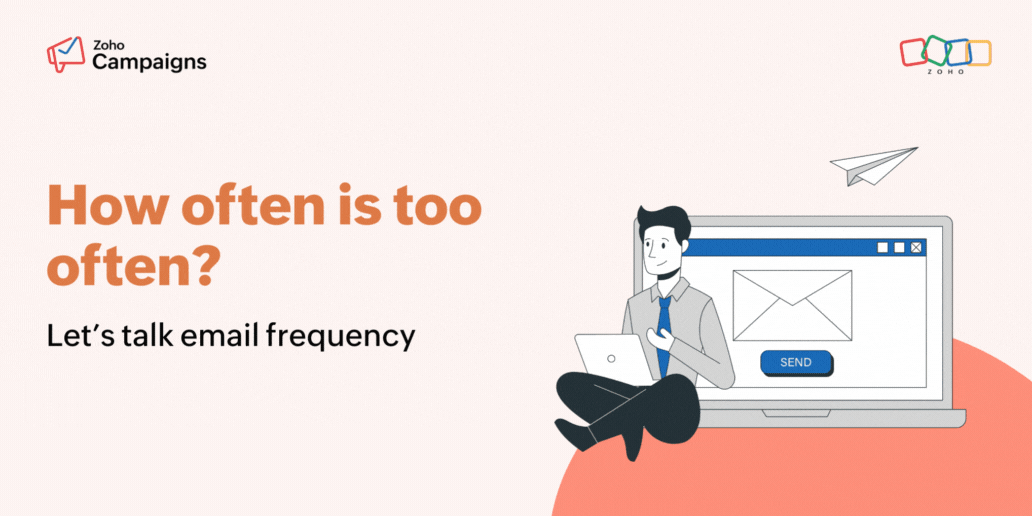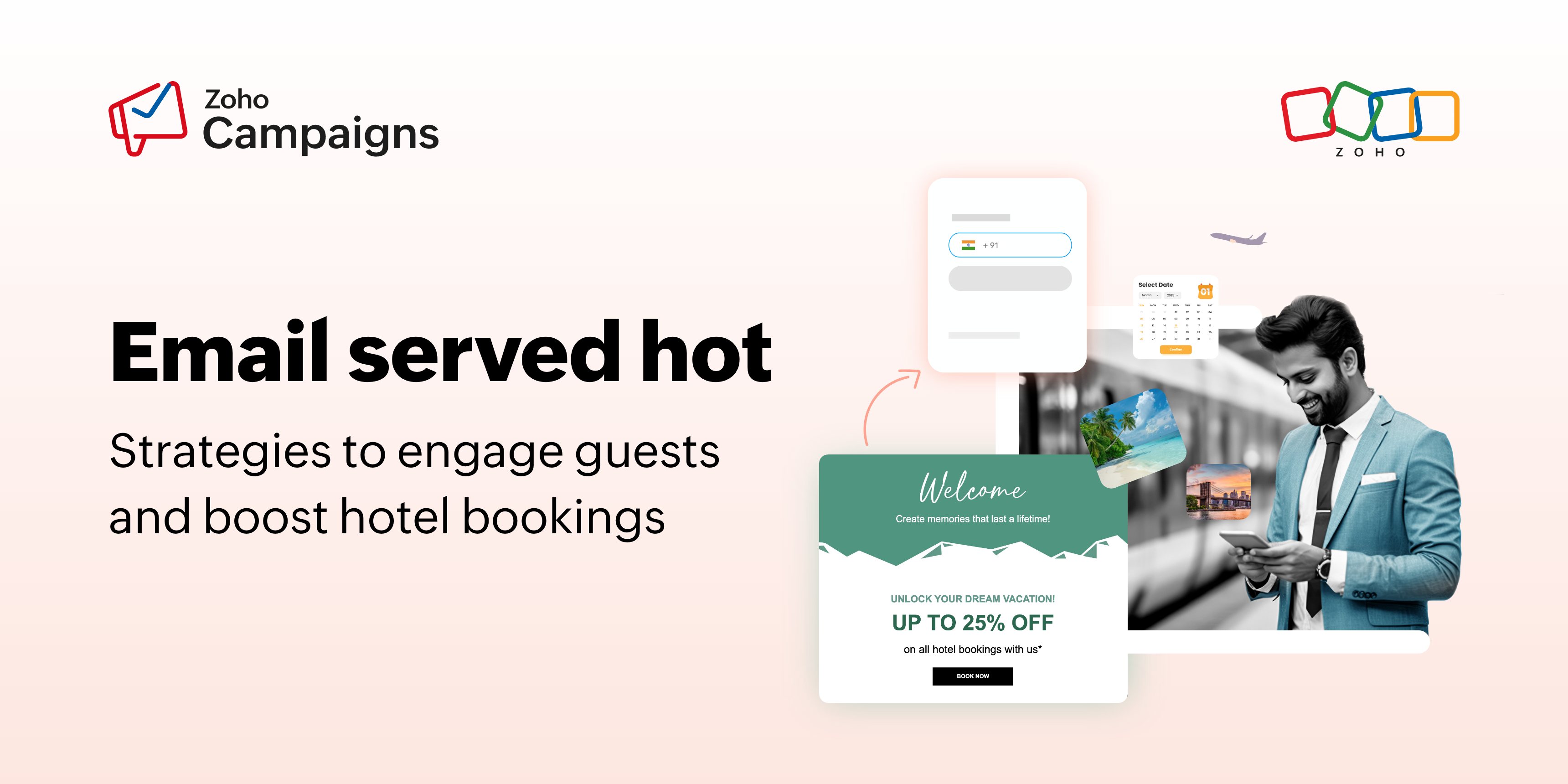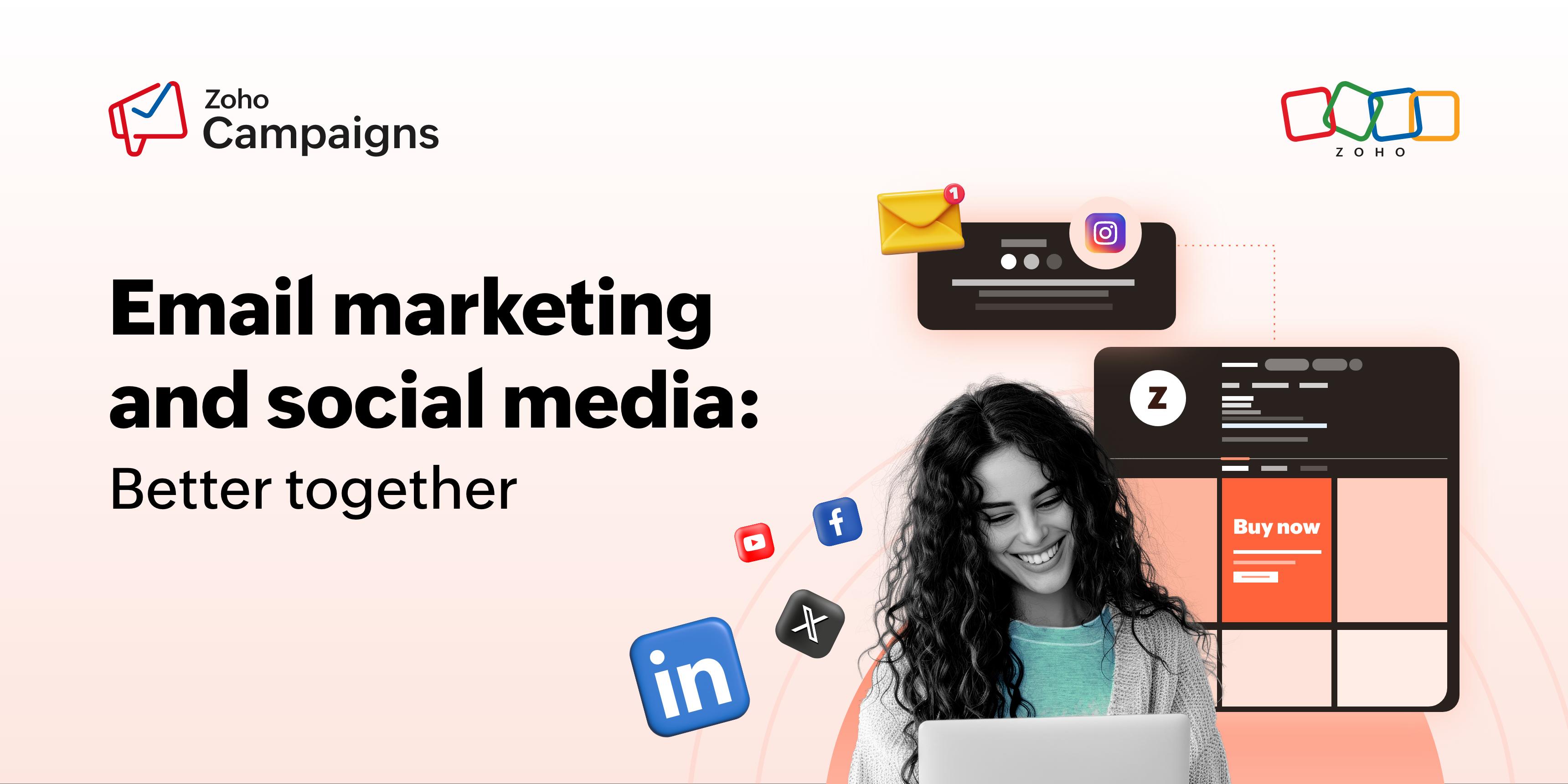- HOME
- Email Marketing
- The ideal email frequency and how to achieve it
The ideal email frequency and how to achieve it
- Last Updated : August 19, 2024
- 371 Views
- 4 Min Read

The marketer asked the Oracle,
"Please, oh please, enlighten me on the right email frequency."
The wise one said,
"That is an answer beyond gods, for you must find it on your agency."
Most email marketers are always wondering whether the frequency of their email campaigns is right. But what is the right email frequency?
Read on to find out.
What happens if you send too few emails?
If you're MIA from your audience's inbox, here's what can happen:
Your audience stops engaging with your business.
Your email list quality decreases and becomes filled with outdated email addresses.
Your lack of consistency puts your reputation at risk.
You miss opportunities to sell, upsell, or cross-sell.
Your audience might even end up forgetting your brand.
You hinder the growth of your business.
What happens if you send too many emails?
On the other hand, you send emails too often, and here's what can happen:
Your emails don't feel relevant or personal for your audience.
Your audience feels email fatigue and either ignores, trashes, unsubscribes, or spam reports your emails.
Your sales go down when you get a lot of unsubscribes and spam reports.
You risk decreased engagement when you bombard your audience with emails.
Factors that determine the ideal email frequency
Industry: Every industry has different email etiquettes, and the need to send emails varies. Industries with fast-moving services or products email more often than industries where the sales cycle is a slow burn. An ecommerce seller is going to send more emails than, say, a healthcare provider. So the industry you're in gives you a baseline on how many emails are generally acceptable in a given period.
Audience: The audience you're dealing with plays a huge role in your email frequency. Your audience's characteristics—what age group they belong to, what jobs they do, how much time they have, how much disposable income they have, and how urgent their need for your product is—come together to determine how often you should email them.
Goals: Your emails ultimately aim to convert customers. But why you're emailing them now matters a lot. Every email you send should have a purpose—ideally part of a larger campaign with a specific end goal. The "why" of your email should dictate what you send.
Content: Finally, content is also key to determining your email frequency. If you send high-quality, valuable content or great offers, that can justify more frequent emails. But if you're resending the same email they've read already, then it may not work in your favor. How-to guides, research reports, best practices, free resources, comparison documents, and videos are some types of content you can include in emails to provide value.
How to find your email frequency sweet spot
Ask and ye shall find: This is a no-brainer and the easiest way to get started. Ask your audience about their preferences and how often they want to hear from your company. Get them to choose the topics they'd like to hearabout from you. Some may want to read weekly tips and tricks, while others may just want a monthly digest. Curate your content according to your audience's preferences.
Read the room: Not every email campaign might be relevant for every subset of your audience. Sending bulk emails without spamming or increasing unsubscribes requires a special power called segmentation. Segmenting your audience and sending only emails relevant to each group helps reduce email frequency so you can get the most of your audience's attention.
Copy the cool kids: How often your competitors email their audience and what the average email metrics are for your industry will help you set benchmarks for your own email campaigns. If you don't have much to get started with, it's good to get started with what you know—i.e. how others are getting the job done.
Walk a mile in your customer's shoes: Where in the customer journey your audience is matters a lot for your email frequency. A loyal and repeat customer might appreciate more frequent updates, whereas a lead who's new to your brand might benefit from a slow drip campaign.
Straight talk is fun too: If your emails are valuable, your audience will look forward to reading them. And what better way to make them do so than by sending your emails like clockwork? For instance, maybe send a monthly roundup of all industry updates in the first week of the month, or email them about discounts and offers two weeks before every major holiday. Such predictability will make your audience look forward to your emails.
What is the ideal email frequency?
Here's a breakdown of email frequencies by industry. Remember that the actual numbers will vary based on each individual organization's goal, geography, audience, and other variables.
Industry/Sector | Number of emails per month | Number of emails per week |
Retail | 20-30 | 5-7 |
Ecommerce | 20-25 | 5-6 |
Hospitality and travel | 10-15 | 2-4 |
Financial services | 5-19 | 1-2 |
Media and entertainment | 15-20 | 3-5 |
Nonprofit | 5-8 | 1-2 |
Healthcare | 4-8 | 1-2 |
B2B | 5-10 | 1-2 |
Note: If you're not sure where your company belongs and want a definitive number to get started with, two to three mails per week would be a safe bet.
Any less than that becomes too little, and any more might be too much. But again, how your audience responds to these emails will depend on the factors we previously discussed. You can get started with this number and conduct A/B tests to determine what works well for you.
Email frequency is just one aspect of successful email marketing campaigns. Keeping your email list clean and continuously optimizing send times and days, among good habits, will make every email campaign a roaring success.
Want to run successful email campaigns with an intelligent email marketing platform?
Try Zoho Campaigns!
 Vidhya Vijayaraghavan
Vidhya VijayaraghavanHi! I'm Vidhya, a storyteller and problem solver. I wholeheartedly believe that B2B content doesn't have to be boring.
When not writing or having a writer's block, you can catch me reading, puzzling, or volunteering.
I'm game for a conversation about anything, especially B2B SaaS marketing (and cats too!).












